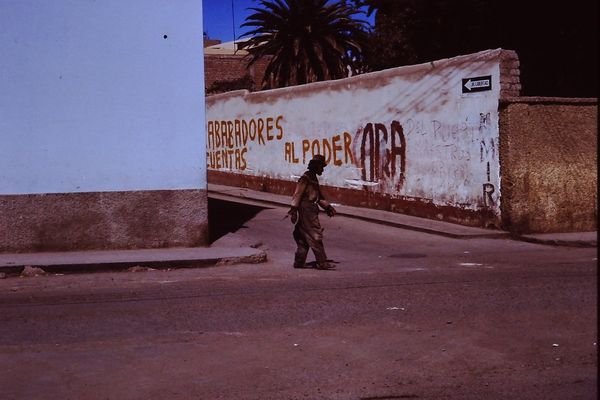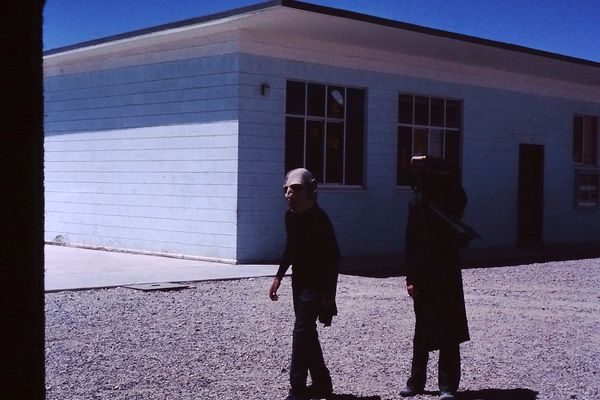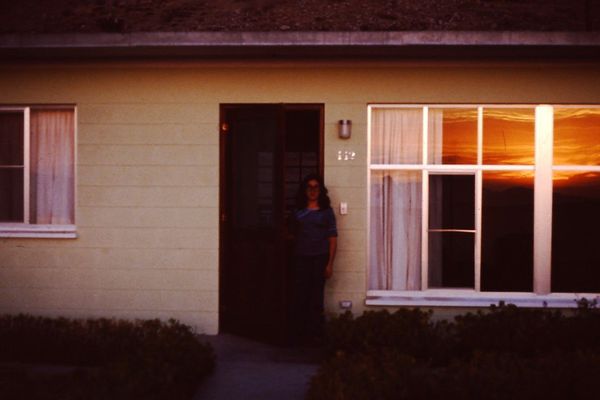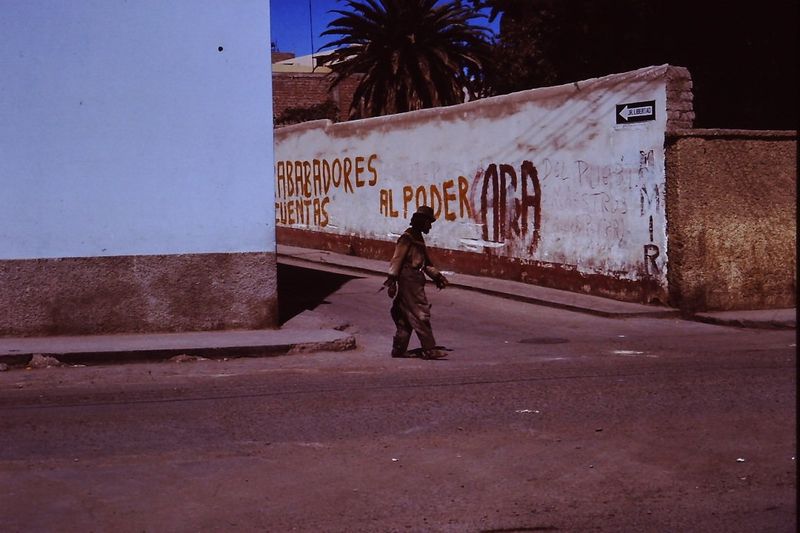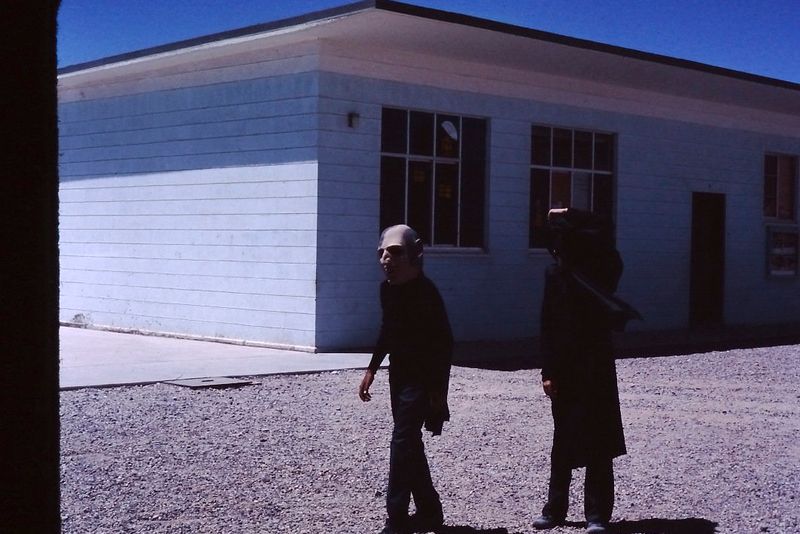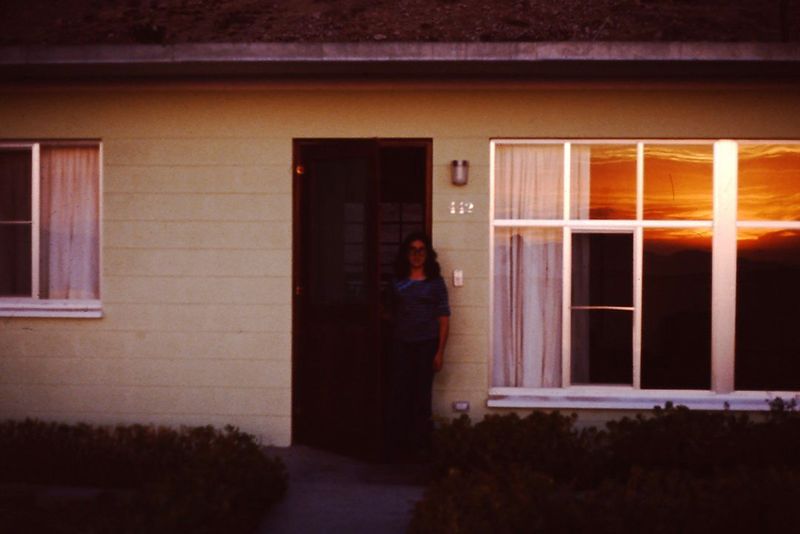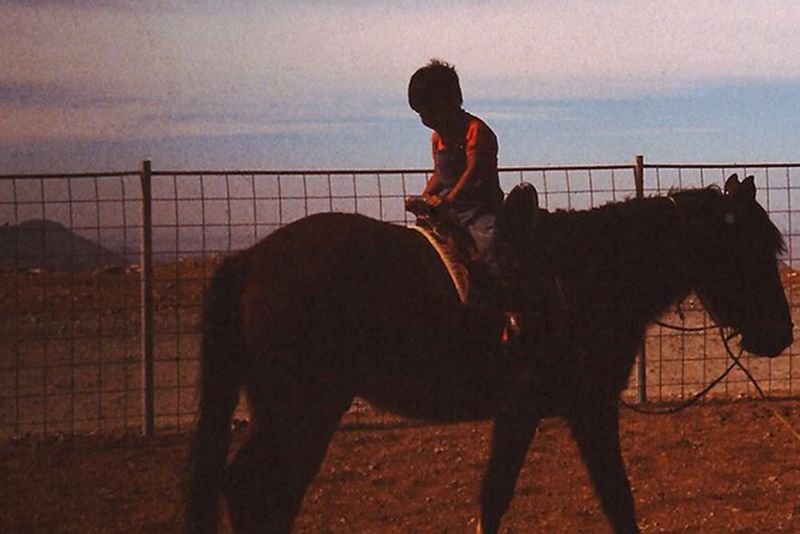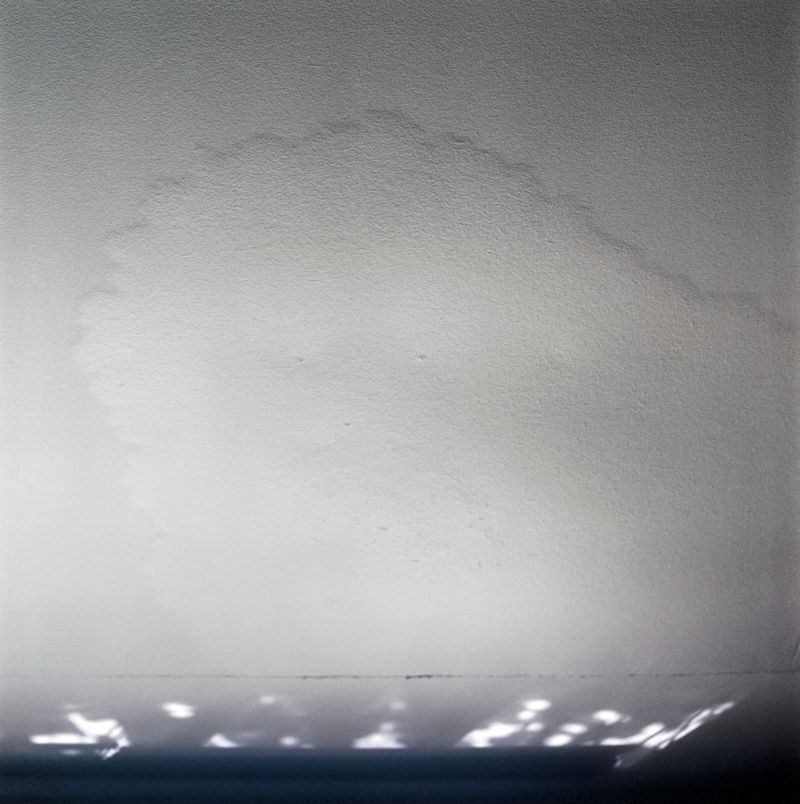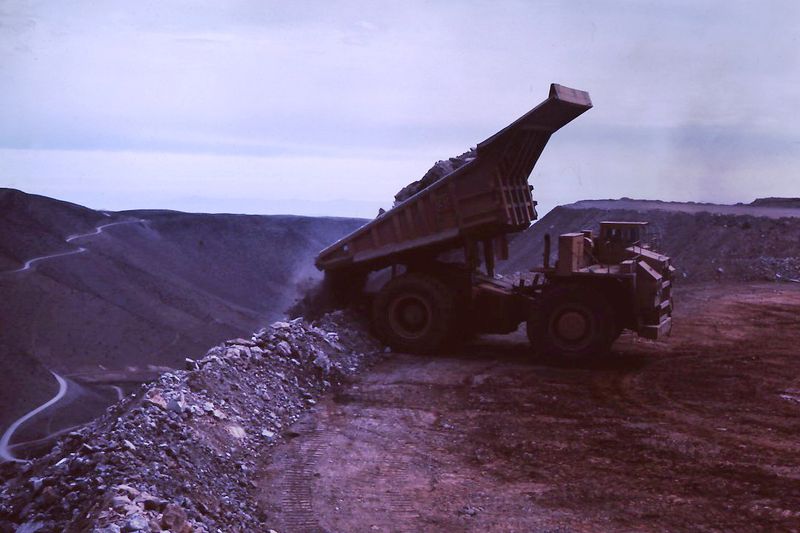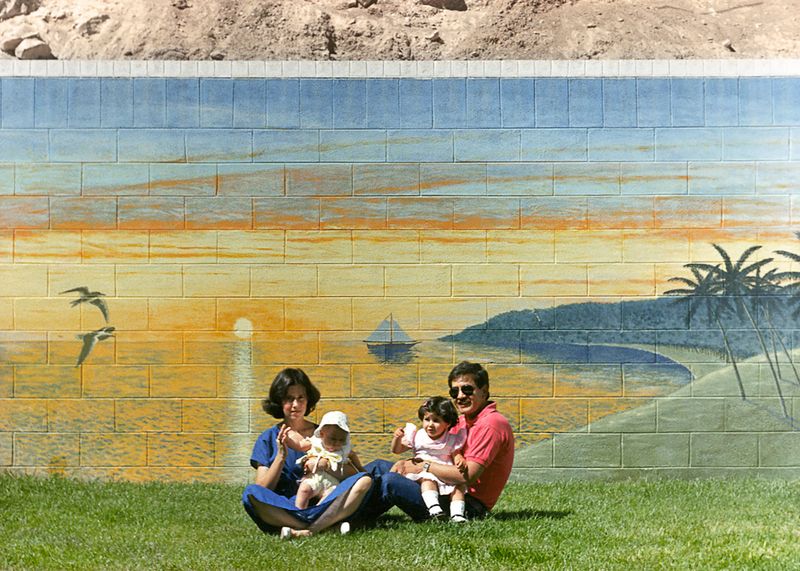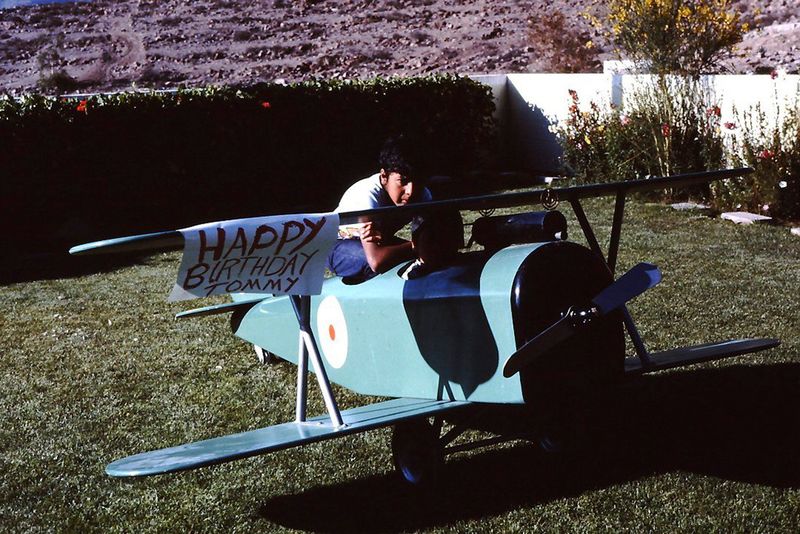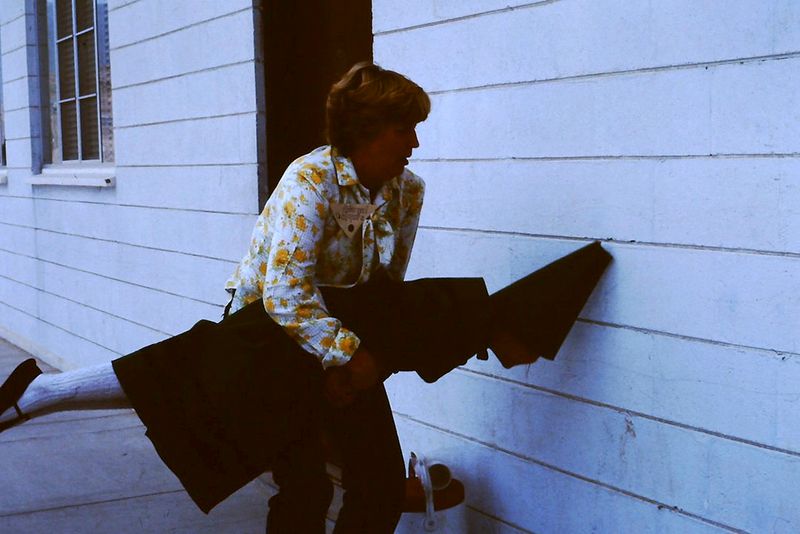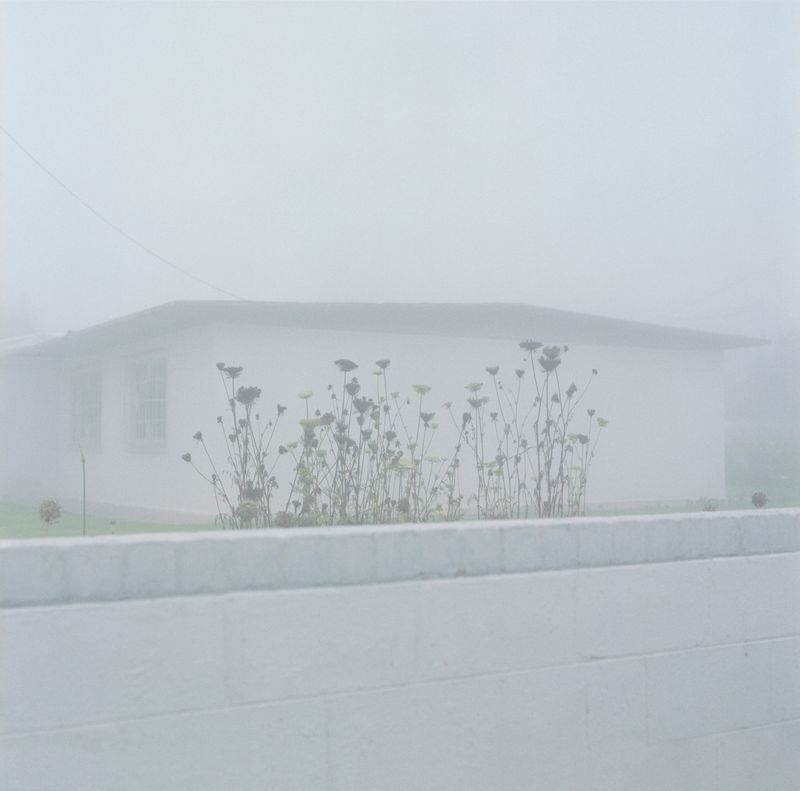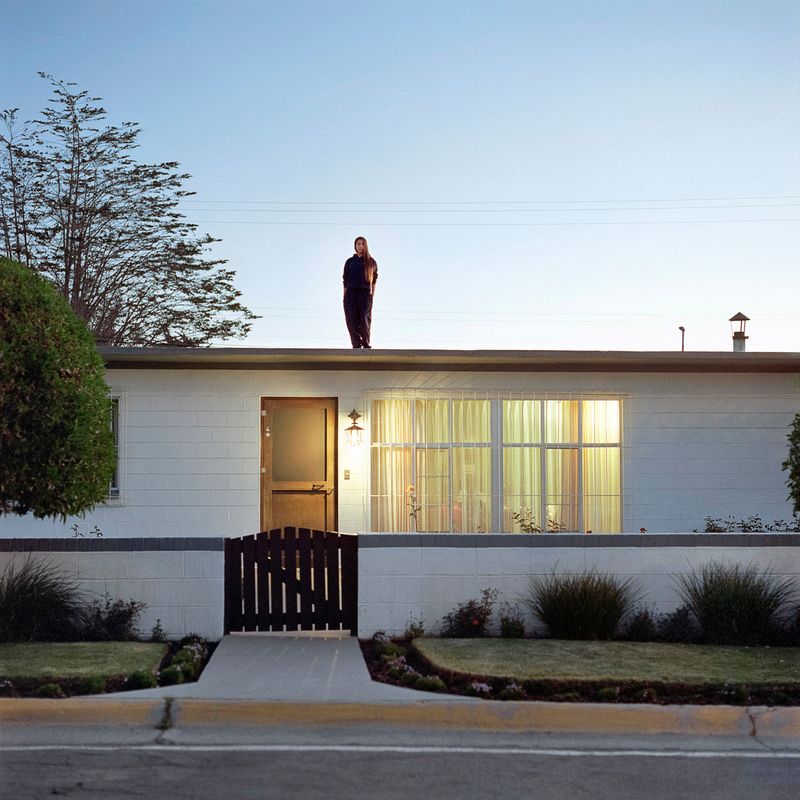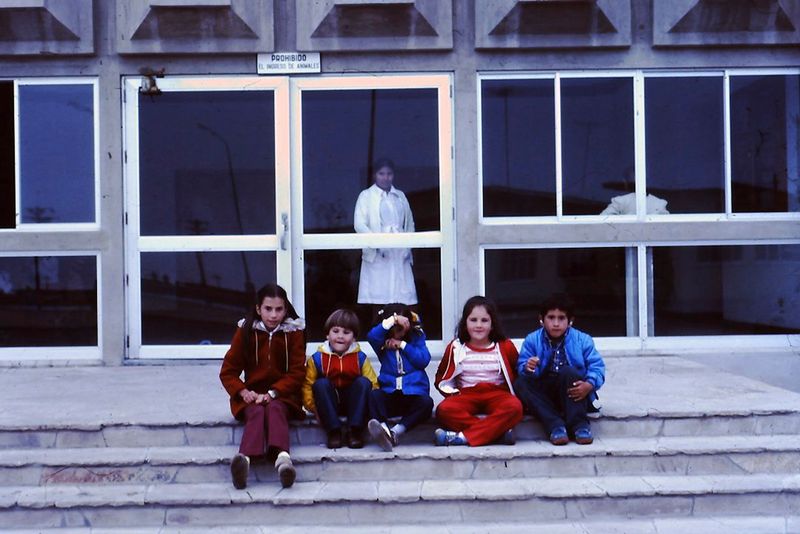El Tesoro de Salaverry (Salaverry's Treasure)
-
Dates2018 - Ongoing
-
Author
- Location Moquegua, Peru
-
Recognition
“El Tesoro de Salaverry” is a story of a wounded territory. In the highlands of Peru, a mining camp was built as an idyllic space with extensive gardens and views of the mountains. However, its beauty is lost as it is an unbalanced, beautiful and sad.
"El Tesoro de Salaverry” is inspired by a main legend (out of three legends that are told in this project), in which Felipe Santiago Salaverry (second president of Peru) finds out he is going to be killed and has to escape Peru from the nearest port. He heads towards the ocean with.a big treasure, but has to leave it behind and hide it because of its weight. The hideout delays the trip and leads to his capture.
At first glance, the story may seem disconnected from the main story that explores a mining camp in Southern Peru. However, this disconnection is apparent and makes sense once we travel the project’s bigger picture composed mainly of photographs from the mining camp, showing archival photographs from a family album and also photographs made by me of the mining camp in the present day. I have full access and permission to use and alter the meaning of the archival photographs that were provided by the family who lived in the camp.
The introductory legend of Salaverry is told by a geologist (my father), which is translated into a video with the mentioned archival photographs of the Americans first visiting Peru, looking for a treasure (which is the mining industry in Peru), and finally settling in the mining camp where story takes place. You can watch the video here: https://vimeo.com/gabrielaconcha/eltesoro?share=copy
"El Tesorro de Salaverry” is the story of neoliberalism in third world countries that are rich in non-renewable resources. This particular story specifically takes place in a mining camp in Peru, as it is the story I particularly know as I was born and grew up there half of my life. The story however is extendable to several stories.
“El Tesoro de Salaverry” also explores the relationship of a place and a family’s malaise. Using written text and photography, the project becomes a hybrid story, which includes legends and dream-like poetry that suggest escapism and a desire to be elsewhere.
The malaise of our family is part of a colonized culture and of an exploited country. The point of tension is the mine, which imitates the malaise or is imitated. Suspicious beauty, troubled motherhood, obedience, domestication and illness are some of the themes explored with the photographs and text.
When trying to flee the country, Salaverry had to leave his treasure behind. The treasure is being searched by geologists and enthusiasts until this day, who are driven to find a hidden treasure that will make their dreams come true.
The Treasure has that degree of value because it has not yet been found. On the contrary, if it were to be found we would probably run out of the search urge. Or the search would turn into something new. No one is satisfied with finding a treasure.
A question that arises at this moment of the project is what is it that we are really trying to change and, by the way things seem to work in the world, what direction we tend to look at when being unhappy. A theme that speaks to this question and that is explored in this project is Stockholm Syndrome, as workers live where they work, their partners become housewives and have to follow very strict rules from the company. There is a shared Stockholm syndrome and a tendency to accept maltreatment without questioning. Miners vote right wing en masse, and defend their exploiters because they think they are saving them.
The company extends its rules towards everybody living there (women and their children), regardless if they work in the mine of not. The activities proposed for women are all religion-driven, and what is very celebrated is the imitation of being full of grace, never unhappy, devoted and submissive.
Another theme that is widely explored is the urban design of the camp and how it influences behavior. The camp is divided in two, with a 20-minute separation between one place and the other. This division was made in the 70's, when the company, which was from the United States, approved a very questionable urban planning: the Americans lived in one space and the Peruvian workers in the other, generating stratification and approving racism. Today, the workers who have a higher status in the company live in the nicer camp, where the houses are large and private, everything is larger and greener, and where they can also be members of two clubs. The other camp is for the workers, where the houses are apartments, the space is more shanty, and does not have many plants or trees.
A third and theme explored in the photographs and the texts are the legends and the dream-like texts. Legends mix up with historical “facts”, defying what was told with what is told by people who actually live there. History is told with the myths of locals and workers and with the point of view of that is called magical thinking. The dream-like texts were on one hand inspired by dreams from my mother, who also lived in the camp more than half of her life. She dreams about faraway places where one can see the northern lights and the snow. Other texts were inspired by the landmarks that surround the mining camp. And later texts speak about the landscape’s mirages: it is said that on clear days, the ocean can be seen from the camp (which is in the Andes, 2,800 meters above sea level). I have also seen the blue line on clear days, but some say the ocean is impossible to see so very high up, and that what we are looking at is actually a mirage. It doesn’t matter if the ocean is real or not: regardless of what it really is, the blue line speaks about distance because distant places are seen blue. The blue ocean or mirage speaks about the thirst to be in another place.
About the Photographs and text:
“El Tesoro de Salaverry” compiles archival photographs from the 70's and 80's of one of the families that lived in the camp, as well as photographs made by me, also in film, and of the mining camp in the present day. The archival photographs are important as they depict a celebration of a new discovery, but something is rarely off with them as well, even though they were shot for a family album. The fact that the slides have aged for over 40 years has underexposed the image to the point many of the faces in the pictures are in total darkness, making this beautiful place a little suspicious.
The point of view of a foreign family in a foreign country is important in the project as it shows this normalized stratification and distance towards the other.
The photographs I made are 40 to 50 years apart from the first images, and show another mining camp, that is now like a ghost town, even though families still live there and the mine is still running. However, something has shifted over the years: everything is more rigid and controlled. All the public spaces have the same paint, including the school and recreational centers. All the houses are white. Religious activities are done every month. Book club, which was initiated by women of the camp, has been closed by the company, even though they don’t own the books. Some women, including my mother, are photographed and interviewed.
The project also includes moving image of the camp, and written myths about the place combined with geological texts (sometimes combined, as legends), to tell its story. The project has come a long way since 2018, when it was first shown with archival photographs, some of my early photographs of the camp, and texts I wrote during my visits to the mining camp. The images I made and the texts were later put together in a book called “Cuajone”, but the project was never completed as it excluded the archival photographs from the 70's and 80's, the new photographs in film from the miming camp, new texts (history and myths) and moving image. The photographs are the main conductor of the story. The project uses mixed media, is hybrid as it fuses photography with other art forms.
I had the opportunity to show a work in progress and exhibition tryout in Matadero Madrid. It was done in my working space and for one day, where I could see its true potential. Here is a very short video of the tryout version of the archival photographs and moving image: https://vimeo.com/gabrielaconcha/exposicionmatadero?share=copy
Explanation: The work space was treated as the open pit mine, and was divided in half by a white line that divides the mountain in two different eras (also explained in one of the displayed videos). The white line was created with the archival photographs turned over. When approached, some of the backs of the pictures had short phrases, imitating the messages or reminders written in the back of the pictures of a family album, but these messages had short poetic phrases.
After many years of research and exploration of the project with mixed media, I believe I have a solid work almost finalized and almost ready to be exhibited and displayed.
If given the grant, I would use it for the story’s completion, which includes:
- A final visit to the mining camp in August 2024, time where very strong wind hits the south and where the climate could help create new pictures of the stratified urban design of the camp, where the wilderness and trees surrounding them are violently moving. I would also like to take more pictures of the surrounding landmarks, rocks, and nature that sustains itself with pride in this desertic area.
- Development and scanning of the taken pictures.
- Scanning of the archival pictures. The archival pictures were scanned in very low resolution. I have spoken to the family to have access to the slides and to scan them again in high resolution.
- Time and space for putting the project together with the texts for a potential exhibition.
Thank you for considering my application.
